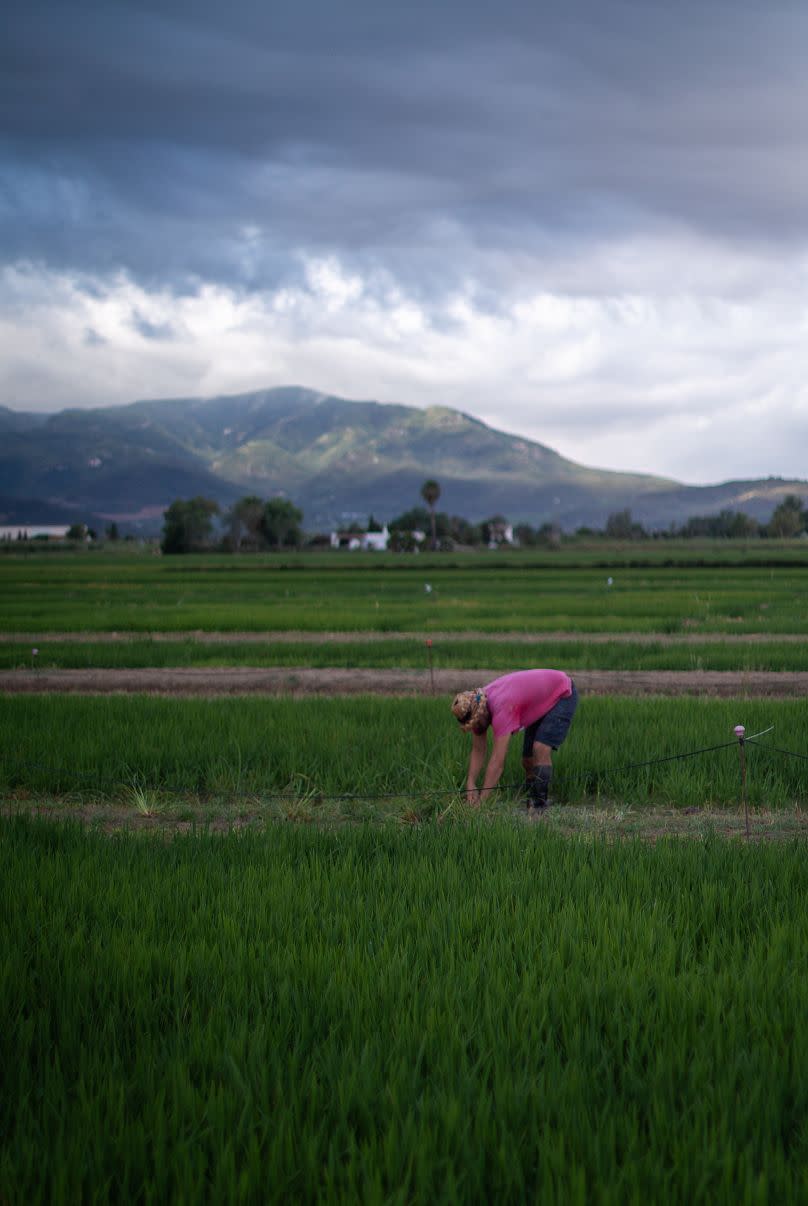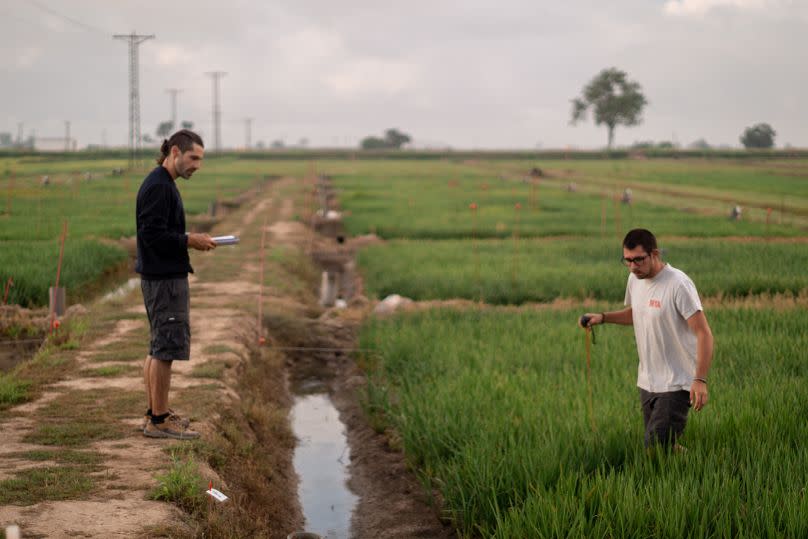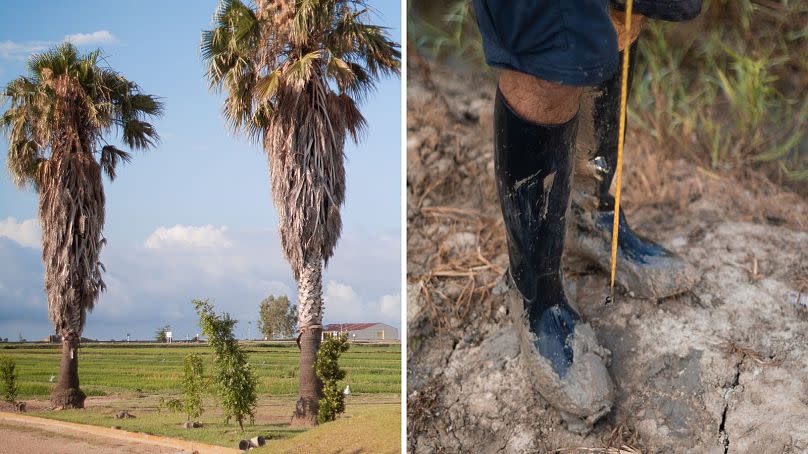Mosquitoes buzz around the researchers on the banks of the Ebro River as they flood the fields and take measurements.
The smell of sweat and insect repellent mixes in the humidity as the team tests water-saving strategies in the flooded fields of the Institute of Agrifood Research and Technology (IRTA) near Amposta.
The Ebro is Spain’s second longest river – winding through the north of the country before emptying into the Mediterranean Sea along the Catalan coast, 200km south of Barcelona.
Here it forms one of the largest wetlands in Western Europe: the Ebro River Delta. It is not only a habitat for many thousands of species, but also serves as a source of hydroelectricityecotourism and – most economically important – rice cultivation.
Drought in Spain, and especially in Catalonia, the Ebro Delta has suffered. Water scarcity has reduced the area available for crop irrigation by 50 percent.
As a result, all factions of the wetland community – including farmers, hunters, environmentalists – and the Catalan government must work together and adapt.
“We have to keep a balance,” Maria del Mar Catala, an IRTA researcher who has worked in the Delta for 35 years, tells Euronews Green.
“The farmers’ thoughts change, they adapt. 15 years ago no one wanted to talk about reducing water, now it’s happening.”
Why rice is important for Spain

Spain is the second largest producer after Italy rice in Europe, accounting for 30 percent of the EU’s total production. The largest rice producing region was the southern part of the country Andalusia, but it was shifting inward climate have changed that.
In Andalusia Seville region, the area planted to rice fell by 53 percent in 2021, 69 percent in 2022 and 96 percent in 2023 compared to the average production of previous years, meaning that the once largest rice-producing region now produces almost nothing. That puts more pressure on other rice growing areas, such as the Ebro Delta, to continue production, increasing the threat to the wetland ecosystem.
“Rice is the most economic commodity in the delta; More pressure on rice production in Catalonia therefore means more pressure on the environment,” says IRTA researcher Nestor Perez Mendez. He speaks as an environmental activist, but also as someone who knows that the economic viability of the delta makes it valuable to government and business.
The delta is in a position that was unthinkable a decade ago because drought has reduced water flow, reducing the deposits of sediment needed to keep the delta above water. sea level. But the Spanish wetland is an example for the rest of Europe and shows how commercial and environmental interests can work together in times of increasingly extreme weather.
The middleman of the wetlands


Funded by the Spanish Ministry of Science, IRTA conducts research to prepare for this future while uniting the delta’s different factions.
“All farmers know that I defend their interests, and I try to create synergy between farmers and environmental interests,” says Maria. “I’ve worked with them all my life, they need me, and I need them. The farmers will adapt, they have to.”
The drought inside Catalonia led to water restrictions in urban and rural areas, reducing water consumption for agriculture by 50 percent. This makes the flooded conditions in which rice must grow increasingly difficult to achieve.
IRTA’s researchers provide technical advice to the government and farmers and conduct experiments in their wetlands facility. These tests include not allowing the rice fields to be flooded for certain periods of time, or flooding and draining the rice fields throughout the growing season. They hope that all methods will reduce dependence on the masses floods and conserve water in times of future drought.
Progress takes time, but the research done today will help the region better adapt to a changing climate in the future. “If people don’t study this, there won’t be a pool of alternatives at the right time,” says Chilean researcher Seba Leonardo.
A delicate delta, an extreme climate
The worsening droughts are not the only climate problem for the local population.
“This year we have the drought with the regulated water and sea level rise. Maybe it’s not like 10 or 20 years, but it’s very close. Then it will be difficult to grow rice here,” says rice farmer Lluis Jornet.
The storms of recent years have been almost as worrying as the drought. As the Ebro meets the Mediterranean, seawater can flood the flooded fields, causing the soil to become salinized. This makes life more difficult for them fresh water species and rice growers.
“The unpredictability of the climate is increasing,” Nestor explains. “We can adapt to less water and provide alternatives to address the water shortage. The problem is that this year may be dry and next year will be wet and rainy; the Ebro Delta is vulnerable to both.
“For me, the worst problems are the unpredictability of the climate, which prevents us from planning a reliable long-term strategy.”


A framework for the future
Technology can help us in a world gripped by extreme weather, but not immediately. The IRTA Institute is an example of longer-term research and lays the foundation for critical research adjustments.
Spain is on the frontline of climate change in Europe, with 75 percent of its country facing climatic conditions that could lead to desertificationaccording to the UN Convention to Combat Desertification.
Other European countries will look at how Spain’s environmental and agricultural communities work together to help each other at local level.
The increased pressure that climate change will place on the more northern parts of the continent requires that we heed the lessons of the delta before the climate catches us unprepared.